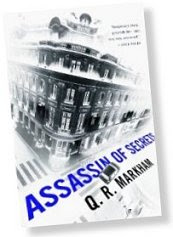Eyes closed and ears attuned to the music and ambient sounds of D'Bento Sushi, it feels like downtown Ginza, Shinjuku, or whatever Japanese city district you last visited. Just don't look out the bamboo-screened curtains, lest the sight of skyscrapers, Malay language on the billboards and the STAR LRT tracks along Jalan Tun Perak brings you back to earth.
I'd been brought to D'Bento, a surprise of a hidden gem in the heart of KL, by a former fly-by-night food writer turned columnist at the start of a long weekend.
The food was good, I was told days earlier. To quell further doubt, I was given samples: some garlic fried rice and several chunks of tori neikei karaage, deep-fried batter-coated chicken in some sauce with chopped bits of a kind of spring onion or chive. The sauce had a strong, savoury flavour, and the bits of spring onion/chive had a little spicy, garlicky bite to it.
The fried rice, pungent and flavourful, sold the place; the wonderful chicken, though cold and a bit soggy, was just the cherry on top - imagine what it would taste hot off the fire. But I would not set foot in the place until several days later.
Some effort was made to make the place look Japanese: paper lanterns, Japanese-motif prints, folded paper cranes on some of the bamboo screens and background music. Even the chef looked like he jumped out of the pages of a manga comic: dressed in black and sporting a funky, spiky hairstyle. Tommy Kuan (a decidedly unJapanese name) had worked for over a decade at some Japanese kitchens in hotels all over KL before he decided to open his own business.
Only a couple of months old, D'Bento was previously at ground floor level. Though popular, the place could only seat about ten at a time, and customers complained. Regulars couldn't lunch there when it was packed. So they closed temporarily to relocate to slightly roomier digs upstairs.
A single lantern marked the entrance to the restaurant, a glass door with the name of the place stuck on it. Another notice pleaded with patrons to close the door carefully.
Though my companion and I were in no hurry, our orders took a while to arrive. The chef cooked everything himself, with only one assistant helping out in the tiny kitchen.
First, came our tori shoga yaki, pieces of bone-free chicken thigh, stir-fried with onions and bean sprouts in a ginger sauce. Though looking and tasting a little like chicken and soy sauce stir-fry, it was delicious, especially with rice (ordered separately). No heat from the ginger, which appears to have been finely grated and mixed into the sauce.
Except that we had the deliciously addictive garlic fried rice instead. Garlic isn't bad, but after a while, it induces thirst. The saltiness of the sauce from the chicken didn't help with that; as the dish cooled it became more evident. But oh wow, how tasty it was. The sweet veggies - the onion and bean sprouts - helped balance the salt in the dish.
Encouraged, we tried some sushi. Items were limited, flying in the face of the mind-boggling diversity found in other Japanese restaurants. Then again, it's a new place and, as Chef Kuan lamented, prices of raw ingredients have soared since the Fukushima incident and some items had become hard to come by or simply unaffordable.
At his recommendation, we tried the soft-shell crab tempura futomaki (four pieces for RM8.50), covered in thick almond sauce and garnished with sesame seeds and ebiko (shrimp roe, supposedly); and the mango and spicy tuna maki.
To our regret, we forgot to ask the chef what made the tuna spicy. That, at least, gave us an excuse to return for more. The bare tuna rolls, half a dozen bundles of ebiko-speckled goodness, were so good.
The soft-shell crab futomaki were even better. The rich mayo-based sauce was flavourful and hearty, and the occasional crunch of sesame seeds or almond flakes made each bite satisfying. But it's a double-edged sword; the sauce overwhelmed almost all other flavours, and if not for the bits that stuck out, they could just use fried tempura batter in the centre.
And the sauce was also a tad salty. We were assured that the saltiness levels would be fixed.
Of course, I'm returning. Four pieces of soft-shell crab tempura futomaki isn't enough for me. They also split the garlic fried rice. And the chef recommended his seafood fried rice. Although... is it rude to order fried rice at a place that touts itself as a sushi joint? Even though it's good?
I was advised not to send this to the papers. The place by my estimates can only seat up to thirty, and it doesn't look like the chef's getting more help any time soon.
D'Bento Sushi
45-A, 1st Floor
Lebuh Ampang
50100 Kuala Lumpur
CLOSED FOR GOOD
Categories:
Eating Out








